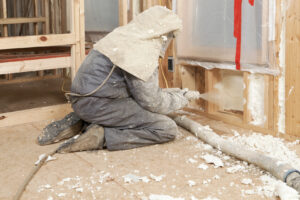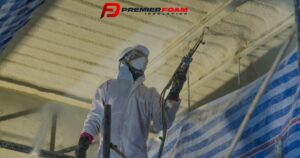When creating an energy-efficient and comfortable home, one area that often goes overlooked is the crawlspace. Proper crawl space insulation is crucial for maintaining a consistent indoor temperature, preventing moisture issues, and saving energy costs. In this comprehensive guide, we’ll explore the various methods of under-house insulation and help you determine the best approach for your home.
Understanding What is Crawl Space
A crawl space is a low, unfinished area beneath a building’s ground floor. It is typically found between the ground and the first floor of a house, allowing access to wiring, plumbing, and other utilities. Crawl spaces are common where basements could be more practical due to soil and water conditions.
The Importance of Subfloor Insulation
Before delving into the different insulation methods, let’s highlight why insulating your crawl space is essential;
Controls Moisture: Insulation is a barrier preventing moisture from entering your crawlspace. Excess water can lead to mold growth, wood rot, and other structural issues.
Regulates Temperature: Insulating the crawl space helps regulate indoor temperatures, making your home more comfortable throughout the year. It is essential in areas with extreme weather conditions.
Energy Efficiency: A well-insulated crawl space enhances overall energy efficiency by lessening the burden on your heating and cooling systems. It, in turn, can lead to lower energy bills.
Pest Control: Insulation can act as a barrier against pests and insects. It makes it more difficult for them to enter your home through the crawl space and can discourage infestations.
Best Ways to Insulate Your Crawl Space
Now, let’s explore the best ways to insulate your crawl space;
Spray Foam Insulation
Benefits: Provides an airtight seal, preventing air leakage and moisture penetration.
Considerations: Professional installation is recommended, and it may be a bit more expensive.
Fiberglass Batt Insulation
Benefits: Cost-effective and relatively easy to install. It can be inserted between joists and studs in rolls or batts.
Considerations: There may be better options in damp environments as they can absorb moisture.
Vapor Barrier Installation
Benefits: Helps control moisture by preventing the passage of water vapor. Often used in conjunction with other insulation methods.
Considerations: Proper installation is crucial for effectiveness. Consult with professionals for the best results.
Rigid Foam Insulation
Benefits: Offers high R-values and resists moisture. It’s suitable for both above and below-grade applications.
Considerations: Requires careful installation to avoid gaps and should be covered with a fire-resistant barrier in exposed areas.
Crawlspace Encapsulation
Benefits: Involves sealing the crawl space entirely, including the floor and walls, to control moisture and prevent air infiltration.
Considerations: Professional installation is recommended for optimal results. It may involve a higher upfront cost but provides long-term benefits.
Also Read: What is the Easiest Ways To Insulate an Attic?
How Do You Seal and Insulate a Crawl Space?
Here’s a step-by-step guide to help you seal and insulate a crawl space;
1. Assess the Crawl Space
Before you start, inspect the crawl space for water leaks, mold, or pest infestations. Address these problems before proceeding.
2. Clean the Crawl Space
Remove debris, old insulation, or other materials from the crawl space. Clean the area thoroughly to create a clean and workable space.
3. Seal Air Leaks
Detects and closes any air leaks in the crawl space, focusing on openings around pipes, vents, and access doors. Employ caulk or expanding foam for effective gap sealing.
4. Install a Vapor Barrier
Lay down a durable vapor barrier on the crawl space floor to prevent moisture from rising through the ground. Use a polyethylene sheet and overlap seams. Affix the vapor barrier to the walls using either adhesive or mechanical fasteners.
5. Insulate the Walls
Install insulation on the walls of the crawl space to prevent heat loss. Use rigid foam board insulation or fiberglass batts, and secure them to the walls using adhesive or mechanical fasteners.
6. Insulate the Rim Joist
The rim joist is where the foundation intersects with the floor joists. Insulate this area with rigid foam insulation or spray foam to prevent air infiltration.
7. Insulate the Crawl Space Ceiling
If your crawl space has an unheated floor above, insulate the crawl space ceiling with fiberglass batts or foam board insulation.
8. Provide Adequate Ventilation
Maintain adequate ventilation in the crawl space to avert the accumulation of moisture. Install vents or a mechanical ventilation system if needed. Maintaining a balance between ventilation and insulation is essential to avoid trapping moisture.
9. Monitor and Maintain
Consistently examine the crawl space for indications of moisture, leaks, or structural damage. Address issues promptly to prevent long-term damage.
10. Consider Professional Help
For expert guidance or intricate crawl space problems, enlist an experienced contractor specializing in crawl space encapsulation and insulation to ensure effective solutions.
Conclusion
Choosing the optimal subfloor insulation method depends on the climate, budget, and specific conditions. Consulting with insulation professionals can help you determine the most suitable way for your home. Invest wisely in subfloor insulation for improved energy efficiency and a healthier, more comfortable home.
Transform your home with our expert underfloor insulation. Bid farewell to drafts and costly energy bills! Elevate your living space—schedule your insulation upgrade now in NYC! Contact Premier Foam Insulation in NYC.





